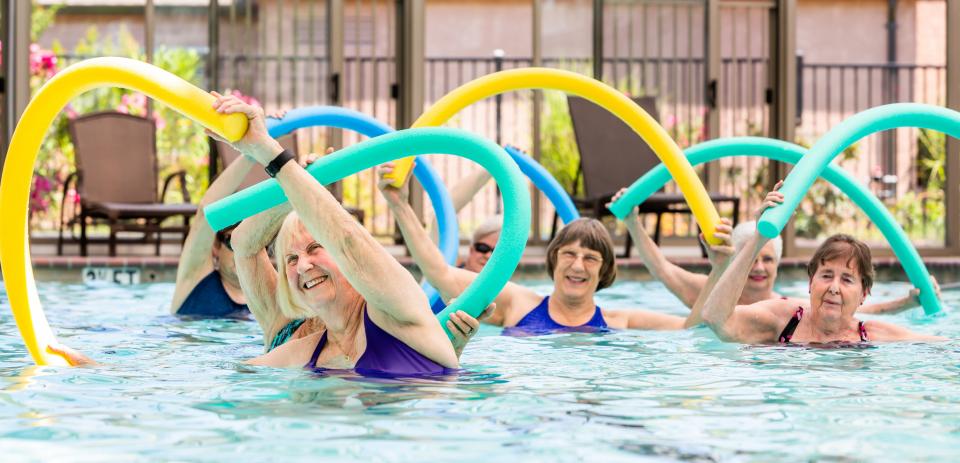
As we age, the possibility of experiencing an injury-inducing
fall becomes a much greater concern. Significant research has
demonstrated that lifestyle elements such as diet, exercise and
medication management all substantially contribute to fall risk
among older adults. Eskaton understands that fall prevention
begins with helping older adults identify those factors that
contribute to fall risk, and continues with finding solutions
that help mitigate these factors.
Download our entire Fall
Prevention Booklet, and discover how small modifications to
your home and daily routine can substantially lessen your chances
of experiencing an injury-inducing fall.
Lifestyle Matters
The key to reducing your risk of a fall is to
understand which factors influence your gait and sense of
balance. Many risks associated with falling can be significantly
reduced when you understand them and take the proper steps to
address them. Interestingly enough, certain lifestyle choices
contribute greatly to fall risk and can be categorized into three
main areas: physical, behavioral and environmental.
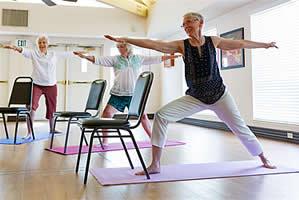
Physical — Changes in muscle strength, mass
and endurance are common as you age. The good news is that
incorporating regular activity and movement into your daily
routine can help you address these changes. Low-impact activities
such as walking, aquatic exercises and yoga can help you to
improve balance, flexibility and strength, all which considerably
reduce your risk of an injury-inducing fall.

Behavioral — Sitting for long periods of
time, eating an unbalanced diet, taking multiple medications and
drinking alcohol in excess all considerably increase the
likelihood of a fall. Adjusting your lifestyle
to incorporate more natural movement, eating a healthy
and nourishing diet, limiting alcohol intake and talking with
your doctor about any issues you’re experiencing with your
prescriptions, are ways you can lower your fall risk.
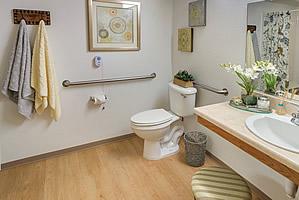
Environmental
— Many cities, neighborhoods and
homes were not designed to address the changes and challenges
experienced by older adults as they age. Uneven surfaces, untidy
living spaces, unsecured rugs, inadequate lighting and
poorly-maintained sidewalks can all pose increased risk for trips
and slips. Making a few minor modifications to your living space,
such as smart home lighting, grab bars in the bathroom or
removing unnecessary clutter, can make your home more accessible,
lowering your risk of a fall.
Get Moving to Stay Strong in Body and
Mind
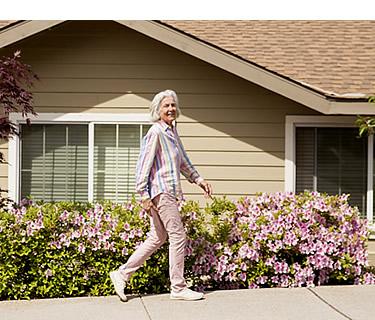 It doesn’t take a medical degree to
understand that increasing your activity levels can help support
your balance, posture and overall mobility. After all, the more
you exercise your muscles, the stronger they are. The stronger
your muscles, the better they support your body and gait,
decreasing your probability of experiencing an injury-inducing
fall. However, what might not be as readily evident is the strong
correlation between physical exercise and maintaining cognitive
(brain) health. Studies have recently shown that the more active
and fit an individual is, the less likely they are to experience
debilitating cognitive change, such as dementia or Alzheimer’s.
While it certainly isn’t the only factor that contributes to
these and other diagnoses, getting appropriate amounts of
exercise certainly goes a long way in fostering and promoting a
healthy brain.
It doesn’t take a medical degree to
understand that increasing your activity levels can help support
your balance, posture and overall mobility. After all, the more
you exercise your muscles, the stronger they are. The stronger
your muscles, the better they support your body and gait,
decreasing your probability of experiencing an injury-inducing
fall. However, what might not be as readily evident is the strong
correlation between physical exercise and maintaining cognitive
(brain) health. Studies have recently shown that the more active
and fit an individual is, the less likely they are to experience
debilitating cognitive change, such as dementia or Alzheimer’s.
While it certainly isn’t the only factor that contributes to
these and other diagnoses, getting appropriate amounts of
exercise certainly goes a long way in fostering and promoting a
healthy brain.
Meet Inge Roberts, an Eskaton Village Grass Valley resident
living with cognitive change. A power walker of the most
energetic sort, Inge came to Eskaton in February 2017 after
receiving her Alzheimer’s diagnosis. Recognizing better than most
the deep connection between cognitive health and physical
exercise, Inge is determined to remain on the move. Read her full story here.
In the Blog
The latest in fall prevention tips.
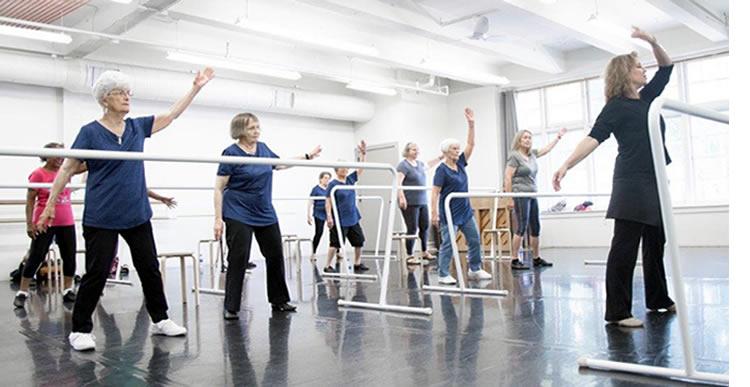
Disclaimer: The information provided is for
educational and informational purposes only. It is not intended
to be a substitute for professional medical, financial, health,
social and environmental advice.
